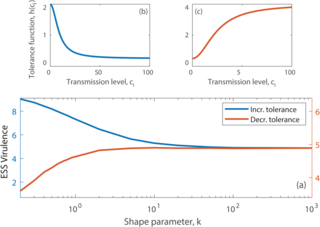Recent outbreaks have highlighted the critical role of infectious diseases in human health, agriculture, and wildlife ecosystems. As the COVID-19 pandemic has shown, it is essential to have a robust theoretical framework that encompasses the ecology and evolution of pathogens. One of the most intriguing aspects of infectious disease dynamics is the phenomenon of superspreading, where certain individuals disproportionately contribute to disease transmission, leading to significant public health implications. This article addresses the impact of superspreading on the evolution of pathogen virulence, defined as the increase in mortality caused by infection, which remains a crucial area of research.
Understanding Superspreading
Superspreaders are individuals who infect a higher number of people compared to an average individual. This behavior can significantly influence the trajectory of an epidemic. As the number of superspreaders increases, the risk of widespread outbreaks also rises, potentially overwhelming public health systems. Research indicates that the likelihood of disease extinction decreases in scenarios where superspreading is prevalent.
In the context of pathogen evolution, superspreading can act as a mechanism that limits the spread of new strains, potentially delaying the adaptation of the disease. Despite the recognized significance of superspreaders, the relationship between these events and the evolution of pathogen virulence remains poorly understood. This gap in knowledge is concerning, as understanding how virulence evolves can inform effective disease management strategies.
Theoretical Foundations
Our understanding of the evolution of virulence is primarily built on theoretical models that predict how different factors can influence the dynamics of disease. A well-established theory posits that a trade-off exists between transmission and virulence. Specifically, as host mortality increases, either through natural causes or due to the disease itself, there is selection pressure for pathogens to evolve higher transmission rates and virulence.
Moreover, research has shown that the structure of the host population can influence virulence evolution, often leading to reduced virulence as contact patterns become more localized. This raises important questions about how variations in host characteristics and behaviors, such as the presence of superspreaders, might further complicate the dynamics of virulence evolution.
Host Heterogeneity and Its Impacts
Studies on host heterogeneity suggest that when a pathogen can infect multiple host types, it may evolve to specialize in one type, potentially at the expense of another. Additionally, targeted vaccination efforts can inadvertently concentrate transmission in unvaccinated populations, which may alter the evolutionary pressures on virulence.
The interplay between pathogen virulence and host heterogeneity extends to the concepts of social behavior and pathogen transmission. Notably, superspreading may correlate with increased immunity, reduced symptom manifestation, or increased pathogen tolerance among certain individuals. Previous studies, particularly during the COVID-19 pandemic, observed that superspreaders often exhibited these characteristics, further complicating the path of virulence evolution.
Exploring the Models
To examine these dynamics, we employed both deterministic and stochastic modeling approaches. By utilizing a gamma distribution, we accounted for individual variability in transmission, transitioning from homogeneous to superspreading scenarios. The models demonstrated that as the shape parameter increased, indicating more uniform transmission, the results shifted, revealing how different transmission dynamics impact the evolutionary pressures on pathogens.
A pivotal finding from our modeling is that superspreading events can increase the time it takes for a pathogen to reach an evolutionarily stable strategy (ESS) concerning virulence. Additionally, the variation in virulence increased under superspreading conditions, suggesting that multiple pathogen strains could emerge, some of which might be maladaptive in the long term.
Conclusion
The implications of our findings are significant for understanding the evolutionary pressures shaping pathogen virulence, particularly in contexts where superspreading occurs. The dynamics of superspreading not only influence the immediate epidemiological landscape but also have important long-term effects on the evolution of pathogens.
Future research should focus on various context-specific scenarios where superspreading dynamics could be further explored. This research becomes increasingly critical as the risks of epidemics driven by rapidly evolving pathogens loom larger in both human and natural ecosystems. By better understanding these dynamics, we can improve public health responses and mitigate the impact of future infectious disease outbreaks.






